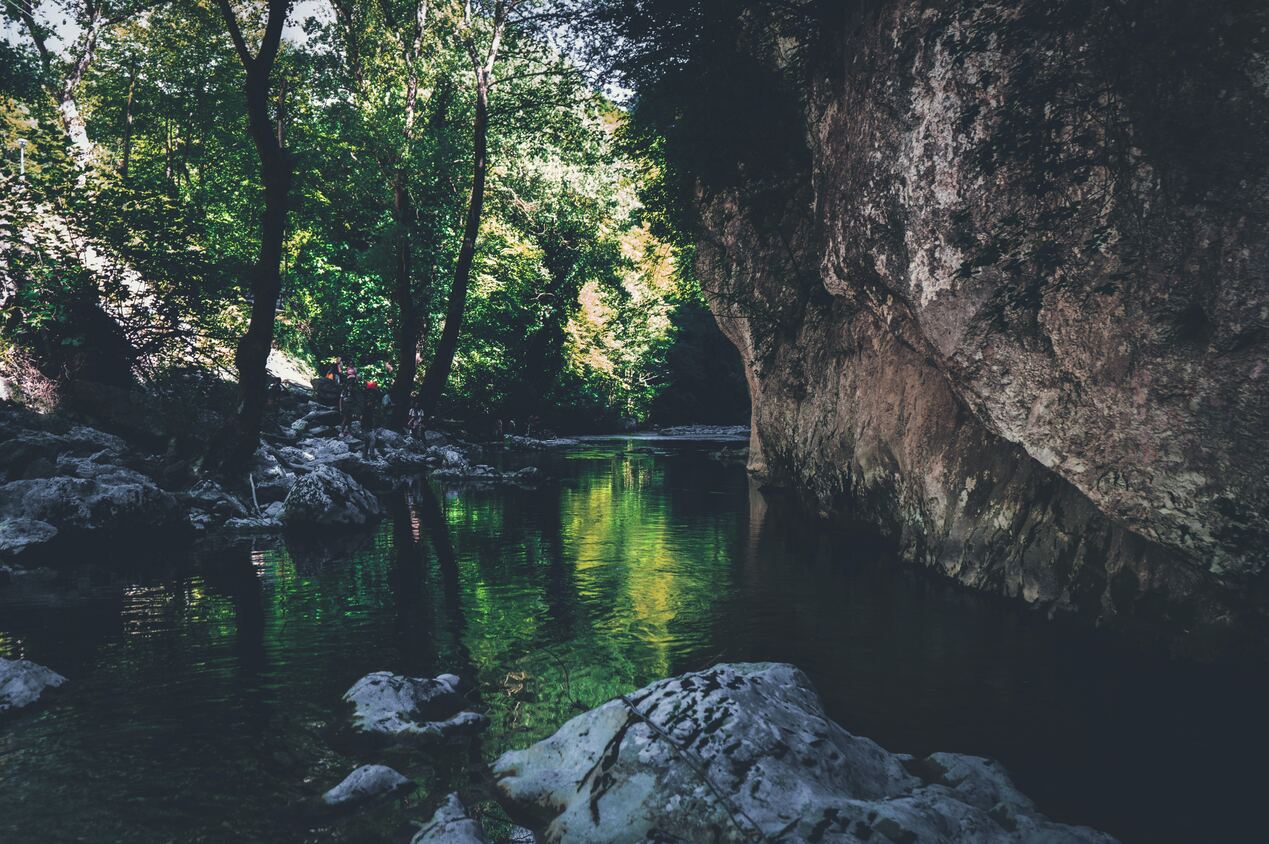As we travel by electric car around Italy, we love finding out about the nicknames given to the cities we visit. It’s an excellent way to celebrate the places we visit and to start discovering the country’s hidden gems. Milan: the ‘meneghina’; Rome: the eternal city; Venice: ‘La Serenissima’; Genoa: ‘La Superba’.
However, in Bologna, they don’t do half measures. It’s the only city in Italy that has three nicknames. ‘La Dotta’ – the learned one, due to its university; ‘La Rossa’ – the red one, because of the colour of the roof tiles used in the city; and ‘La Grassa’ – the fat one, because of its cuisine.
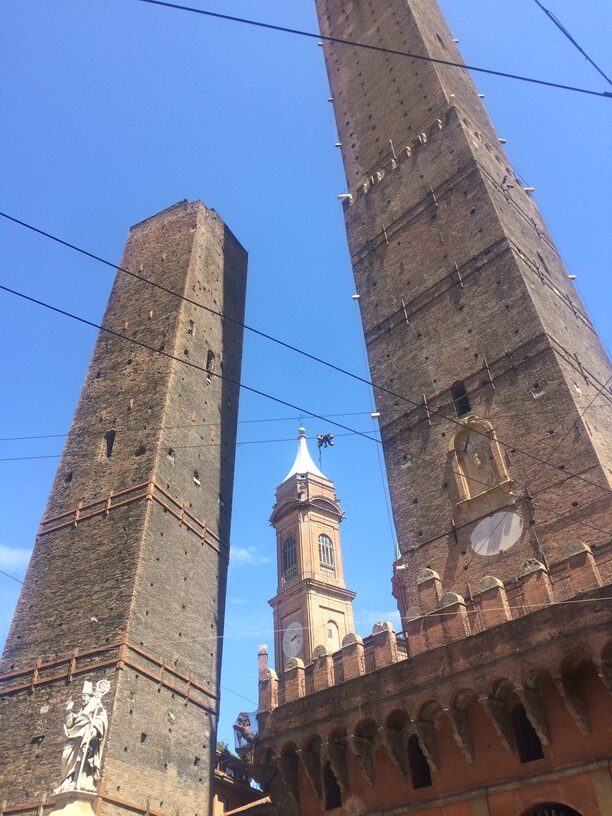 As if to give more proof if its ‘no half measures’ approach, in 2020 the city of Bologna signed an agreement with Be Charge to install 108 charging points throughout its metropolitan area over 5 years. At present, part of this project is being activated. With Quick Charge points providing up to 22kW of power and Fast Charge points giving 250kW of power, the city has an embarrassment of charging riches.
As if to give more proof if its ‘no half measures’ approach, in 2020 the city of Bologna signed an agreement with Be Charge to install 108 charging points throughout its metropolitan area over 5 years. At present, part of this project is being activated. With Quick Charge points providing up to 22kW of power and Fast Charge points giving 250kW of power, the city has an embarrassment of charging riches.
In Bologna, if you have an electric vehicle, you can park for free in the city’s blue parking spaces. If you’re planning a visit, apply for a permit to access the ZTL limited traffic zone before you go. This will let you and your electric vehicle to enter the red and blue heart of the city.
We’d choose the Be Charge charging point closest to the historic centre, at no. 3 Via Calori, just a short walk from the PalaDozza, the home of the Fortitudo basketball team. Walking for around 15 minutes, passing through the archways on Via San Felice and then Via Ugo Bassi, you get to Piazza Maggiore, the city’s largest square.
Leaving Neptune’s fountain behind you, the mythical ‘Garisenda’ and ‘Degli Asinelli’ towers peek out above the skyline. The square features a magic streetlamp, known as the ‘lampione dei neonati’. You’ll find it next to the Palazzo Re Enzo. Find it and watch it carefully because it only lights up when a baby is born in the city! Bringing a little bit of light to life.
From 2012 the lamp has been linked to the Sant’Orsola and Maggiore di Bologna hospitals, where the nurses can press a button each time a baby is born, to light the lamp in the square. To get a better idea of why the city is called ‘La Rossa’, climb the Torre degli Asinelli. Or better still, walk along the famous Portico di San Luca, the world’s longest covered arcade!
You need to walk the full length of the arcade – 3,796 metres – to appreciate all the different shades of red the city has to offer. Starting from the Arco del Meloncello, you’ll climb the 489 stairs that are located beneath 666 arches. So, you’ll have no excuse if it’s raining! From the top of the sanctuary of Madonna of San Luca, you’ll be able to see all of the city’s nature, architecture and history.

You’ll be struck by all the warm colours on show, from purple to yellow. You’ll see over 350 variations of brick, all of which are typical of Bolognese residences. These are special ‘Bolognese tiles’, and they’ve been used in the construction of the city’s medieval towers and palazzos.
Why is it known as ‘La Dotta’? With its name stemming from the Latin word ‘Bononia’, the Emilian capital is extremely rich in history and culture, and it’s home to one of the world’s oldest universities (founded in 1088 AD)! Bologna is a mix of relationships that are grounded in the warmth of its people, its arcades, and its numerous typical osterie where everyone meets, creating a real power network.
Have you ever seen seven churches in one? While you’re in the city centre, swing by Piazza Santo Stefano to see one. If you’re lucky, your experience may be enhanced by Gregorian chants. On the official Bologna Welcome website, you can buy a special card for €25.00 that lets you skip the queues and save more than €50.00, if you decide to get fully immersed in a complete tour of Bologna’s culture.
Bologna’s University District is synonymous with good, unfussy venues, and you’ll encounter all human life there. The centre of university life is in Via Zamboni. Number 35, in the Palazzo Poggi complex, is the home of the university’s library, inaugurated in 1756. If you want a free guided tour, you’ll need to register. One weekend per month you can also see the exhibits in the Museo Marsili and marvel at the Aula Magna (Great Hall).
Enjoy the food of Bologna
For a real taste of authentic Bologna, eating well is a must. So now we’ll tell you why Bologna is known as ‘La Grassa’! Get an early start and have a breakfast of typical Bolognese dishes: a pinza – a jam-filled cake – or sweet pastry raviole with grape jam and pine nuts. Stock up with goodies at Paolo Atti & Figli in the city centre and congratulate yourself on your good taste with coffee and impeccable service from Aroma or Caffé Terzi. 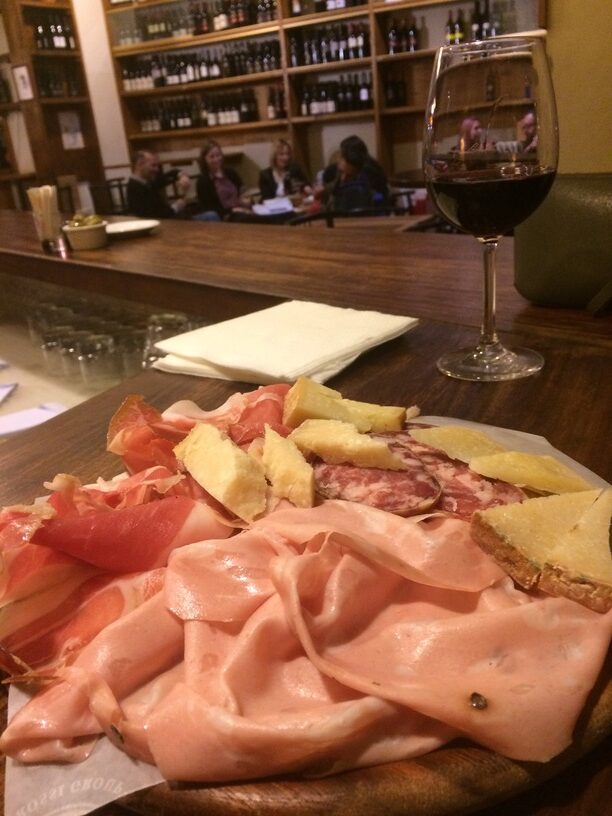
At lunch or dinner, you can delight in dishes such as tortellini, balanzoni, tagliatelle al ragù. And don’t go without having a sandwich made with mortadella ham! Here’s a little list of places not to be missed:
Best croissant, mortadella sandwich and ‘crescenta’ focaccia: Pigro Mortadelleria, no. 1b Via de’ Pignattari, Bologna. As a ‘palate cleanser’, Luca will recommend that you wash it all down with a glass, always from the freezer, of the local Pignoletto wine from the Bolognese hills.
Best hand-rolled tagliatelle: Trattoria Annamaria, no. 17 Via delle Belle Arti, 40124 Bologna. A place from another time with kilometres of pasta made in the kitchen with a grandmother’s love. Oh…and there’s no such thing as spaghetti Bolognese!
Best Bolognese cutlet Osteria Bottega, no. 5 Via Santa Caterina, Bologna. This is a magical place with a real host who will serve you speciality dishes whilst telling you all about the ingredients and their origins!
Best platter of cold meats and cheeses: Enoteca Zampa, no. 127/a, Via Andrea Costa, Bologna. A ‘mystical’ experience on the outskirts of the city that starts with the scent of toasted bread. In Bologna, a platter like this is a must!
Best craft beers and natural wines: All’Ortica, no. 26/b Via Mascarella. If you’re a lover of craft beers and natural wines (not just those from the area), this is just your thing! Evening entertainment options in Bologna are many and varied.
For a real gastronomic experience that’s authentic and based on seasonal agricultural products, let’s take you on a tour by electric car beyond the walls of the region’s capital. The best gastronomical experiences aren’t just found in Bologna; on the contrary, it’s easy to find places in the surrounding areas that offer simple but high quality menus.
The particular town of Medicina
We arrive in the municipality of Medicina, located in the plains just 15 minutes to the east of Bologna, and we find l’Osteria di Medicina, a traditional venue with a medieval heart. The place is vibrant and is a meeting place where people 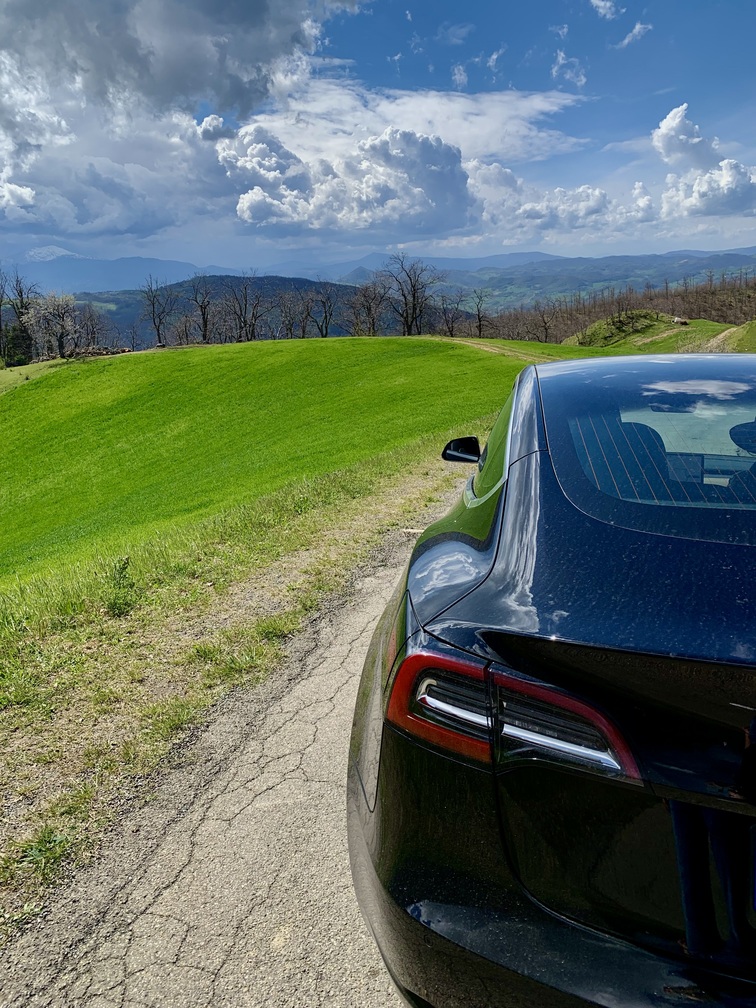 socialise, a place to get excellent food and drink. Visitors leave here well refreshed, even if they’ve just stopped for an aperitif.
socialise, a place to get excellent food and drink. Visitors leave here well refreshed, even if they’ve just stopped for an aperitif.
There are 6 charging points right in the old centre of Medicina. Be Charge charging points are compatible with a wide range of cars, we charged out vehicle while we enjoyed a long lunch and a walk in this joyous rural town.
The food star of this part of the area is the Medicina onion, found in brown, white or red varieties. This gem has been protected since 2004 by a specialist organisation, the Consorzio della Cipolla di Medicina. The town gets its name from ancient legend and the miraculous recovery of Holy Roman Emperor, Frederick I of Swabia, known as Barbarossa (Red Beard).
After getting sick, Frederick healed here thanks to eating a special broth – a broth that a snake had accidentally fallen into. As a token of gratitude, the Emperor called the town Medicina – ‘a place where one is cared for and treated’, granting the town independence from Bologna and recognising it a number of privileges.
At Osteria di Medicina we had excellent friggione, a pasta sauce made from braised onions and tomatoes, and green nettle tagliatelle with ragù di nonna Iole, a sauce cooked for 7 hours! It’s a real showpiece. Quality at unbeatable prices. We met their cook, Alessio, who’s also a TikTok-er. He’s very friendly and very professional, an absolute star!
It’s time to unplug the car from the charging point and leave the hustle and bustle of the city behind us and head off into the green inland areas. Set the satnav for Grizzana Morandi, just 40 minutes from Bologna, and spend a few hours visiting Rocchetta Mattei, a jewel that’s not to be missed!
A tour of Sasso Marconi
If your lunch was quick and there’s not enough charge in your car’s battery, stop in the town of Sasso Marconi. You’ll be able to plug into the Be Charge Fast charging point at no. 2 Via dell’Annunziata (the Fontana district). As well as 2 CCS sockets, there’s also a Type 2 socket. Everything can be easily activated via the app, or directly at the charging point with an RFID card, just tap the screen to start and finish the charging process.
Rocchetta Mattei is a historic building belonging to Count Cesare Mattei. Born in 1809, he invented electrohomeopathy, and was an aesthete and very passionate about art and design. The building is a castle that marries several building styles together. It’s an original example of architecture that dominates the green hills of the Apennine countryside.
For our tour, our guide was Alessandra, originally from Emilia Romagna, who is also an art lover. She is a supporter of the Renewable Energy Community in her hometown of Sasso Marconi, one of the first in Emilia. She gave us a tour filled with energy, information and anecdotes about the life of the Count in his castle.
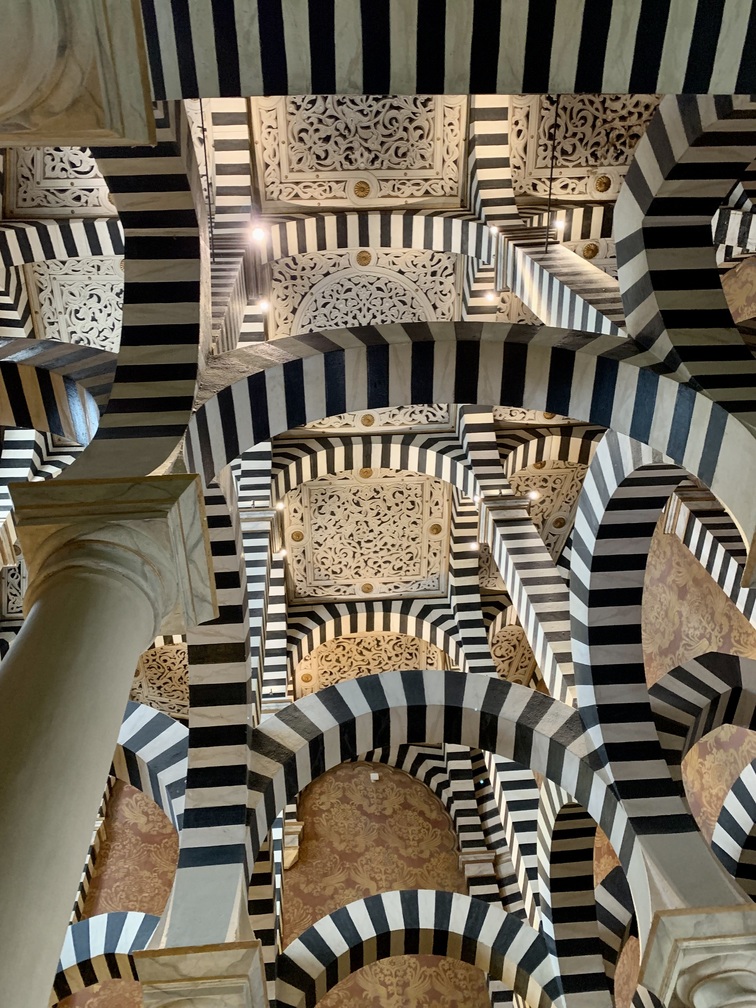
Every room in this original residence was conceived and designed for a very precise purpose. For example, the 90s room was created to accommodate a banqueting table for 89 ninety-year-olds. This was done in anticipation of the Count’s 90th birthday. Sadly, Cesare Mattei never got to celebrate it.
The castle’s more notable areas include a chapel, inspired by the Mosque-Cathedral of Cordoba, and the Courtyard of the Lions, in which the Count wanted to reproduce in miniature the version found in the Alhambra Palace in Granada.
There’s also a special staircase, where you feel like you’re climbing when you’re going downstairs. Rocchetta Mattei is like a fairground! You can only visit the castle by booking and places disappear quickly, so book your guided tour well in advance at https://www.rocchetta-mattei.it/
We continue our electric adventure by getting back in the car and driving alone beautiful and quiet roads, immersed in the nature of the Apennines, rich in scents and colours. Just a few kilometres separate us from the border with the province of Modena.
Just 20 minutes from there, you can reach the area of Montese and enjoy a lovely walk. Get well prepared, plan your route, and get out onto some of the paths on the historic Gothic Line.
Montese is a small town deep in the Modenese hills. It’s an area rich in woodland and pasture, which feeds the local cattle. The milk they produce is then made into Montese Parmigiano Reggiano. The town is situated at the base of an enormous 13th century stronghold that has double boundary walls and a crenellated tower.
The famous Gothic Line
The Gothic Line is a defensive line created in the latter part of the Second World War. The line stretches from the Ligurian coast between Massa and La Spezia to the Adriatic coast; it crosses the Apuan Alps, the Garfagana valley, the Modenese and Bolognese Apennines, the upper valleys of the Arno and Tiber, finishing at the emplacements between Pesaro and Rimini.
It was built by the German forces as they retreated from central and southern Italy following the Allied liberation of Rome and Florence. It extended for more than 300km, cutting Italy in two. This is a way of getting to know and finding out more about a key period in Italy’s history, directly in the locations and at the points where the belligerents were located.
Start at the Rocca di Montese stronghold and visit the museum, then take the short walk to the town centre and from Via Vereta begin the CAI 444 tourist path which takes you to Monteforte and the Iola district. We recommend that you visit the Church of Santa Maria Maddalena and the Museo di Iola museum dedicated to the Gothic Line. This is a 9km circular walk in the countryside.
To recover from our efforts, we stopped in a special place: La Vecchia Scuola Montalto. A place filled with the heady scent of bread. In this famous ‘yeast laboratory’ we tasted passion, generous professionalism, and genuine raw ingredients from the area. The crunch of their pizza base is the perfect post-adventure treat. All washed down with local craft beers. Tasting is believing!
We hope that you’ve enjoyed our vision of the Apennine area. An area that’s constantly being developed as the world transitions to renewable energy. Thanks to Be Charge, we were able to take an electric car and find out how the landscape is changing.
This is just a small taste of the region’s countryside and old canals, enchanting walks, urban parks, ancient trees and luxurious waterfalls, fortresses, castles, and timeless communities. Its many facets are tied together by a growing network of charging points.
As the great journalist, Edoardo Raspelli, says, ‘you don’t come to Emilia Romagna as a tourist, but as a guest’.
See you soon!
Photos and article by Electric-Trips







